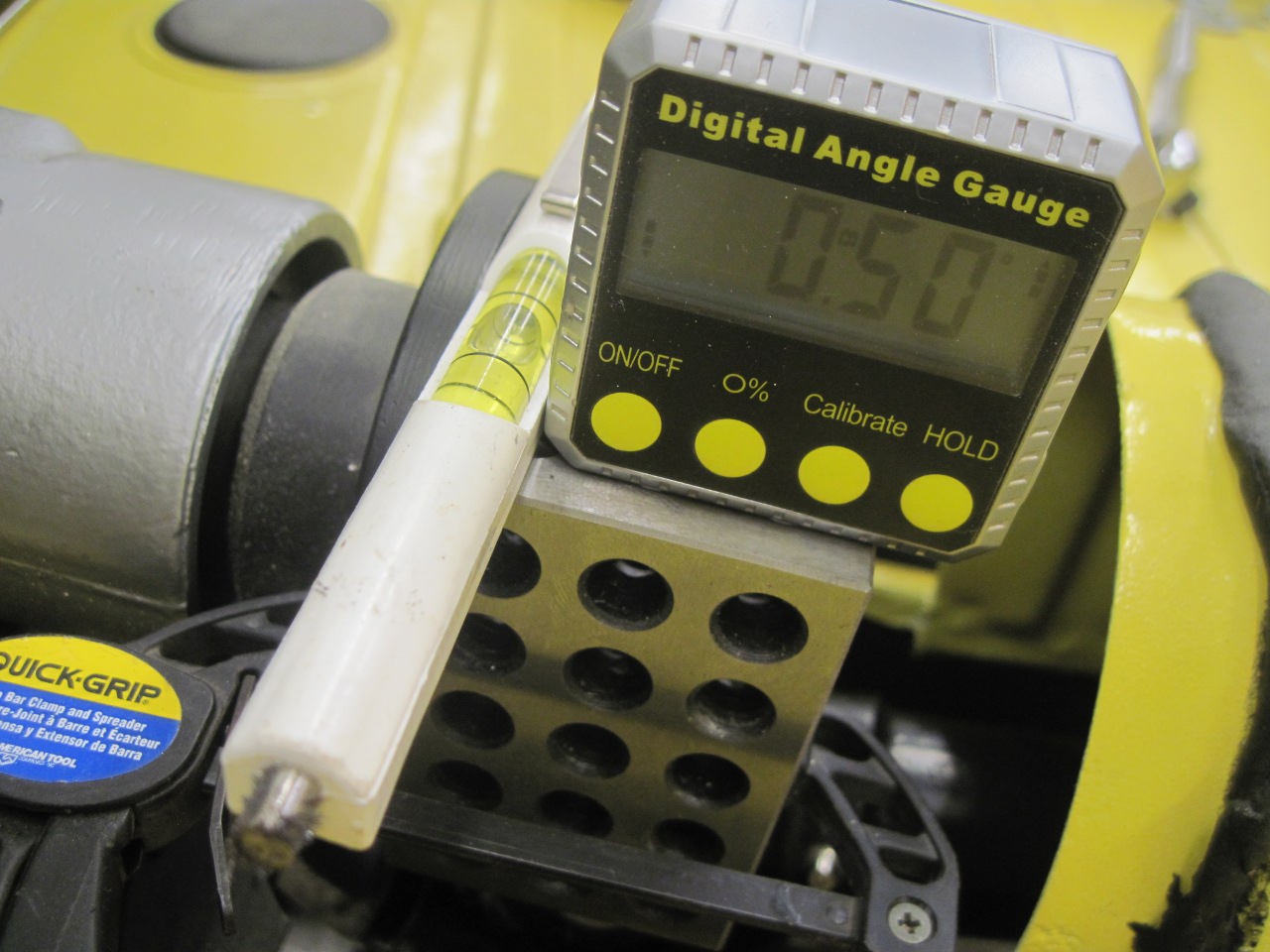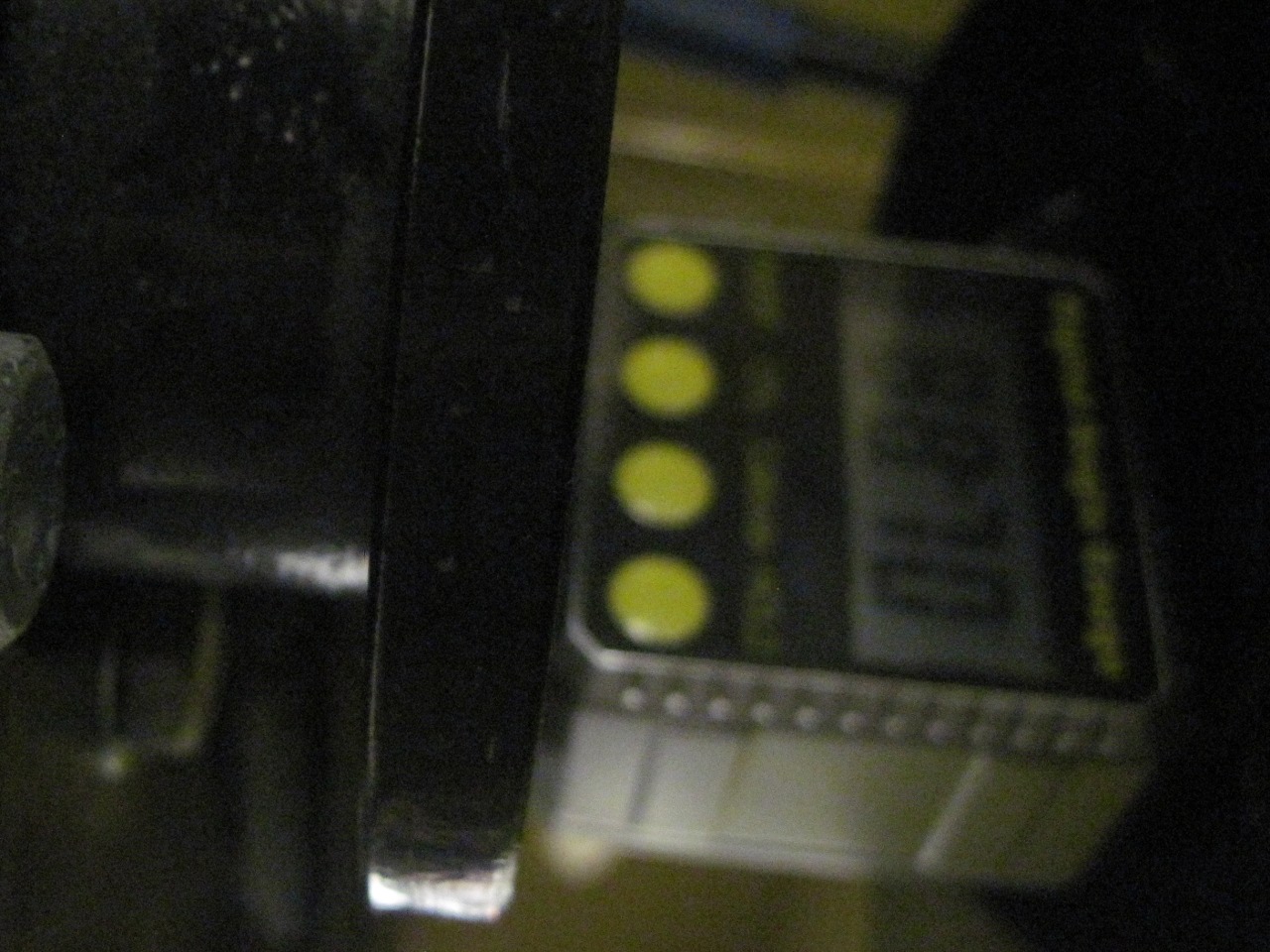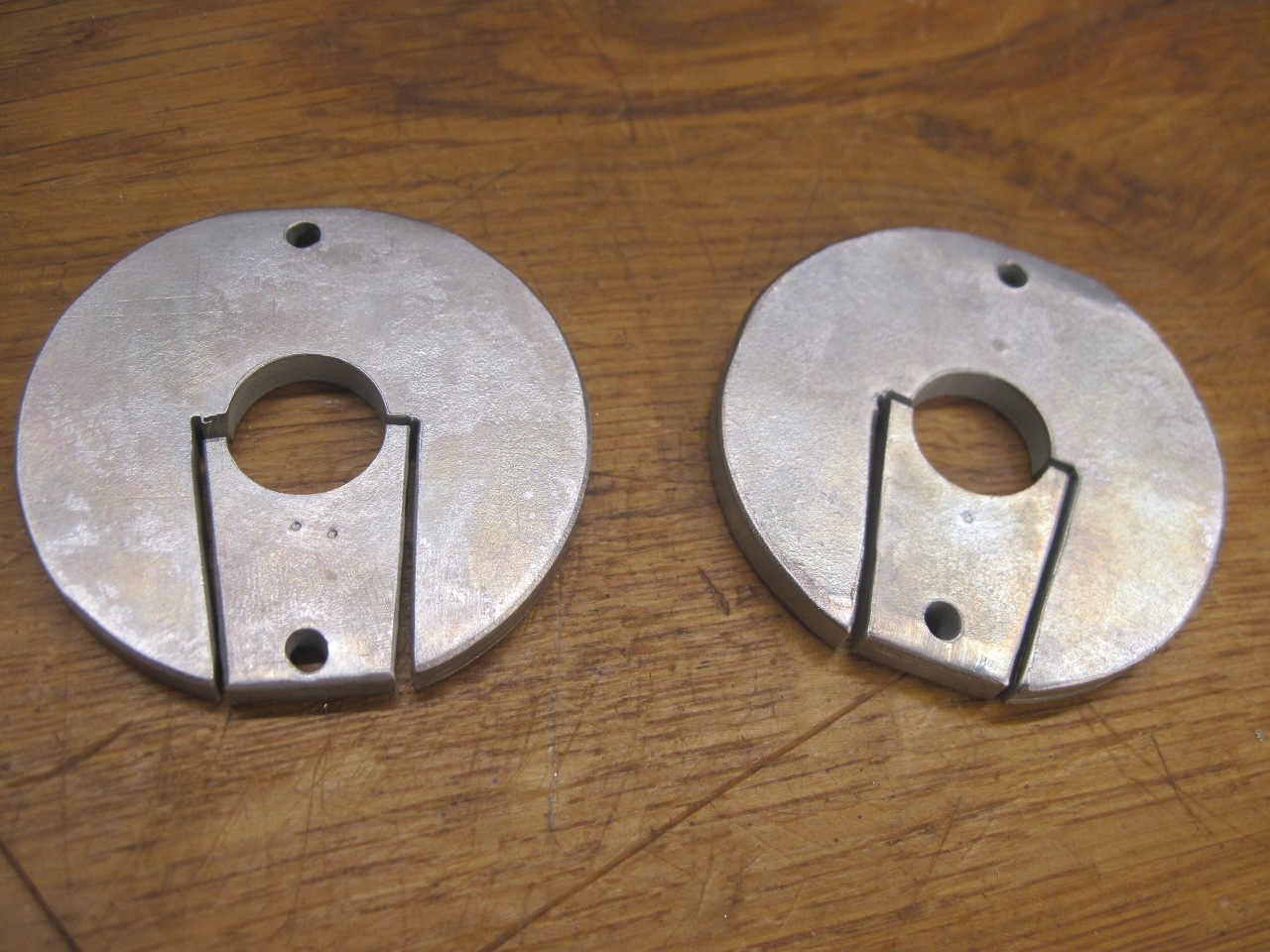To my other TR6 pages
July 25, 2017
Driveline Geometry
I
had cause recently to be pondering drive shaft U joint angles. I
vaguely knew that the geometry of a drive shaft was important, and that
a lot of thought goes into it (or should go into it, at least) for
highly modified cars, especially things like rock climbers or cars with
radically raised bodies.
The
drive line geometry is something I didn't give much thought to on the
TR6 project, since I made no modifications in that area. But in
response to a question about TR6 frame sag and how it might affect the
alignment of drive components, I decided to take a little deeper look.
My frame did have some rear end sag, and I had to address that to
get decent panel gaps and get the rear bumper brackets to fit right.
(Some pictures here of how I did that.)
During that project, I had calculated that the sag at the rear
suspension was probably on the order of 1/4" or so, and I decided not
to pursue fixing that. I didn't, however, consider what affect
frame sag would have on drive line geometry. Rear frame sag would
have the effect of rotating the differential into a slightly more "nose
up" orientation, and this could theoretically affect the drive shaft
angles.
A
little Internet research suggested that even small amounts of driveline
misalignment could cause vibration and premature wear, so I sat down
with a pad and pencil and worked out some of the math behind U joints.
Those with an unhealthy curiosity about that math can see it here,
but for the rest, take my word for it that the main takeaway is that
the axis of the gearbox output shaft and the axis of the differential
pinion shaft need to be parallel for all drive shaft speed and angle
distortions to fully cancel. If frame sag tips the differential
up, it could be a problem.
This is where my usually fairly latent OCD kicked in, and I decided I needed to determine the alignment of my drive line.
So, out came the exhaust system, the rear part of the tunnel, and the drive shaft.
Now,
I can't think of a good way to measure gearbox output or pinion shaft
angles directly, so I worked from the respective flange faces, which
should be pretty close to perpendicular to their axes.
In
the left picture, a machinists 1-2-3 block was clamped to the flange
and leveled side-to-side. Then the magnetic angle gauge was
placed on top. Though I did calibrate the gauge to true
horizontal, it really wasn't necessary since the angles of these axes
to horizontal is irrelevant. We just want to know their
relationship to each other. In fact, the back of the car was
jacked up, so these don't represent any angles we'd see in normal
operation. The more artsy picture on the right shows the gauge
attached directly to the diff flange.


The
upshot of this foolery was that with the car in this attitude, the
gearbox flange was pointing up at about 0.5°, and the pinion flange was
also pointing up at about 1.3°. For the axes to be parallel, the
diff flange should be pointing down at 0.5°.
A
little math told me that, based on the distance between the front and
rear diff mounts, to rotate the diff by 1.8 degrees, I could shim down
the front mounts by a little over 5/16", or shim up the rear mounts by
the same amount. Unfortunately it looked like neither mounting
point would accommodate that much extra thickness, but I could split
the shims. For the front, I made up a couple of these two-piece
shims from 3/16" stock. The little wedge pieces are so I could
just lower the diff slightly on the studs, and insert the larger part
of the shim, then slide in the wedge to lock it in place. The
shims went on top of the rubber mounts.

For the rear, I just used an extra 1/8" thick washer between the diff cover and the rubber mount brackets.
On
re-measuring the angles, I got a final angle mismatch of only about
0.3°, so this approach got rid af over 80% of the angle error. I
decided that chasing the remaining 0.3° just wasn't worth it.
Things like frame flex and flexing of the rubber mounts will probably cause more variation than that.
Comments to Ed at elhollin1@yahoo.com
To my other TR6 pages